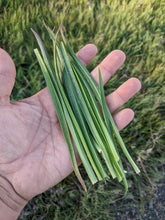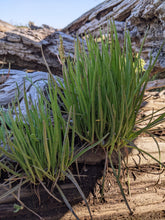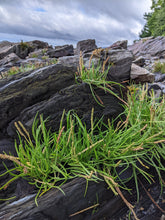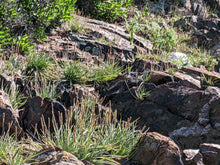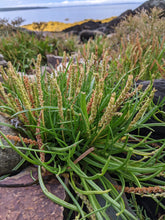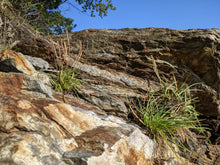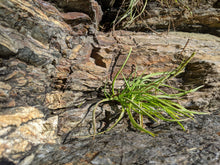'East Meets West' Sea Plantain Breeding Mix
Regular price
$8.00
Sale
Plantago maritima
Origin: North America
Improvement status: Wild
Seeds per packet: ~100
BOTANICAL SAMPLE - NOT GERMINATION TESTED
Life cycle: Perennial
EFN INTRODUCTION. Sea Plantain (Plantago maritima) is a wild perennial vegetable that inhabits maritime environments in temperate to cold climates, rarely found growing more than a few feet from the high-tide line. But it's so resilient it can even thrive well below the high-tide line, getting swamped by seawater for multiple hours twice a day. It can handle being watered with saltwater. It also has a similar nutritional and medicinal profile to the other plantains, which means it's a powerhouse. But the best thing about it is its quality as food.
I've put a lot of plantain in my mouth through the years — especially the common wild species, Plantago major and Plantago lanceolata, which I often chew up and apply to insect bites or other skin irritations — but none compare to sea plantain. Crunchy, fleshy, salty, fresh and vibrant, it's easy to start munching on this plant by the handful. There's really nothing like it. It can be cooked or pickled too. Some plants have a bit of bitterness, and occasionally some astringency too, but not all of them. And none are as bitter as the buckshorn plantain (Plantago coronopus) that people regularly grow in gardens as food. What's more, the fleshy leaves can stay crunchy and delicious without refrigeration for 4 or 5 days — a remarkable quality in any vegetable, but especially one used as a green.
This perennial wild plant has huge potential as a perennial vegetable. Beyond being nutritious, delicious, and easy to grow (if it can be protected from rabbits!), it can also thrive in saline soils, which the world has lots of these days due to both over-irrigation and seawater incursion (both exacerbated by climate change). This breeding mix contains seeds from select plants from all of the populations we currently have for sale, plus an additional one from near Portland, Maine, and a large and delicious population on Vashon Island in the Salish Sea (specifically Puget Sound) of Washington State. We hope that bringing together Atlantic and Pacific populations helps encourage the kind of diversity required for domestication.
By putting these seeds out into the world, we're hoping to start a collaborative domestication project that could one day result in the best-tasting perennial green in the world.
Who's in?
(To stay in touch on this effort, please join our project page at www.ExperimentalFarmNetwork.org)








